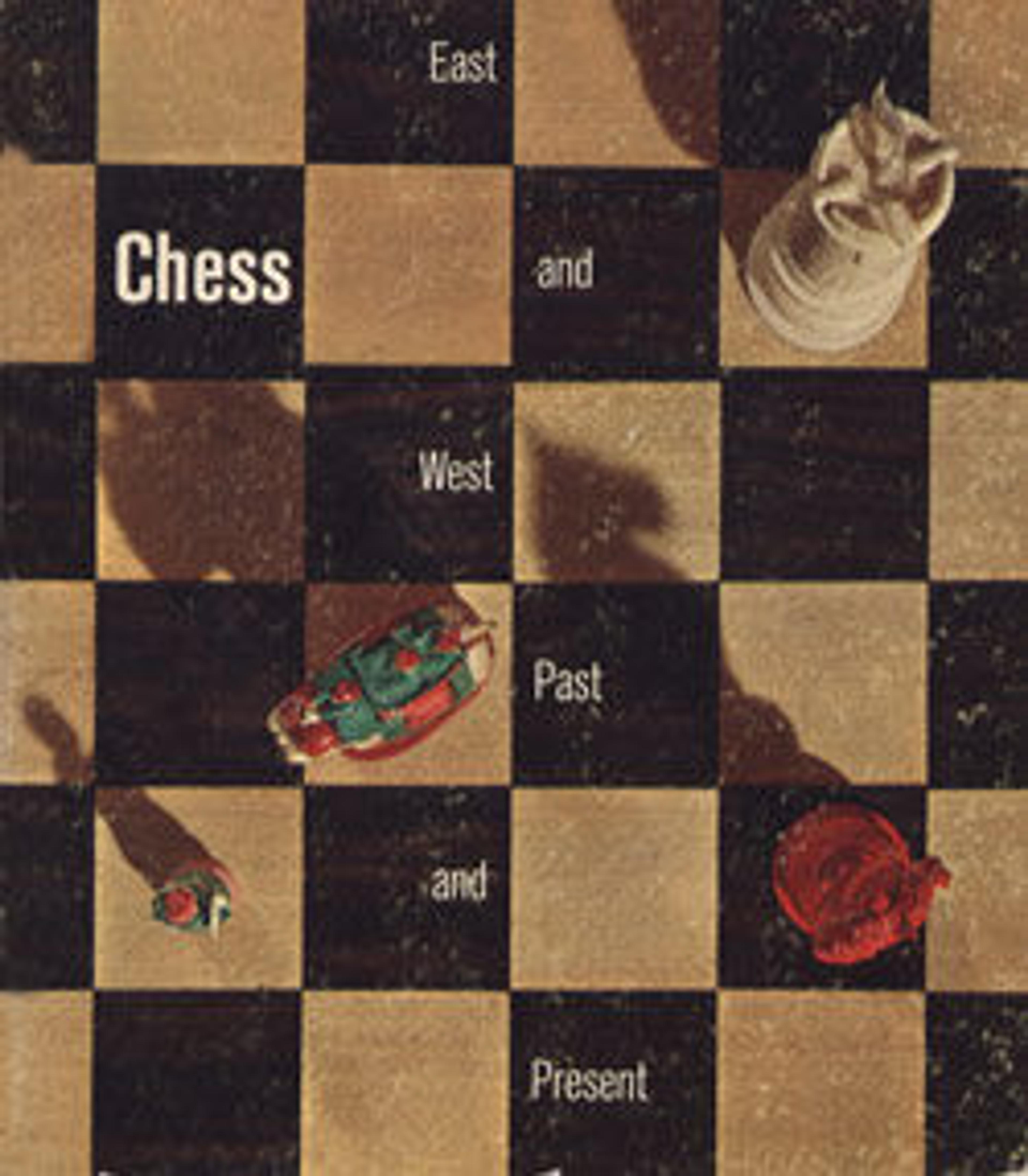Bear and deer hunt chessmen (32) and box
A somewhat baffling combination of pieces: both sides have as king St. George killing the dragon, but without a saddle or reins; as queen a mounted barbarian with a bearskin instead of a saddle and carrying a spear. Bishops are griffins with their right claws resting on a miter. The silver knights are mounted figures in armor, carrying lances; black knights are foot soldiers in armor, with the cross of St. George on their shields and breastplates. The silver rooks are camels, and the black rooks are rhinoceroses, both with towers on their backs. Running stags are the silver pawns, and the blck pawns are bears at bay. The figures are probably south German, with stands possibly added in England. There are no hallmarks on the silver.
The set is said to have been given by George III to one of his physicians, Dr. Tyler, and the shape of the stands is explained as that of pillboxes. Early nineteenth-century pillboxes, however, were not of this form; and although the usual elongation of the box that came with the pieces (impressed with royal crowns and GR) suggests that it may have once been a case for medical instruments, thus confirming its connection with Dr. Tyler, there is no evidence that the chessmen have always belonged with the box. The set, rather, seems to be made up from two different sets, one with hunting figures and one with military figures, possibly from the same workshop, which would account for their similarity in scale. The use of tall bases is not peculiar, apart from the form, to this set, for other nineteenth-century sets show that such were fashionable, usually in the shape of truncated columns. The introduction of camels and rhinoceroses seems to reflect hybrid ideas resulting from certain Indian sets made for the foreign market.
The set is said to have been given by George III to one of his physicians, Dr. Tyler, and the shape of the stands is explained as that of pillboxes. Early nineteenth-century pillboxes, however, were not of this form; and although the usual elongation of the box that came with the pieces (impressed with royal crowns and GR) suggests that it may have once been a case for medical instruments, thus confirming its connection with Dr. Tyler, there is no evidence that the chessmen have always belonged with the box. The set, rather, seems to be made up from two different sets, one with hunting figures and one with military figures, possibly from the same workshop, which would account for their similarity in scale. The use of tall bases is not peculiar, apart from the form, to this set, for other nineteenth-century sets show that such were fashionable, usually in the shape of truncated columns. The introduction of camels and rhinoceroses seems to reflect hybrid ideas resulting from certain Indian sets made for the foreign market.
Artwork Details
- Title:Bear and deer hunt chessmen (32) and box
- Date:probably first half 19th century
- Culture:German
- Medium:Silver, polished and oxidized
- Dimensions:Height (oxidized queen): 3 5/16 in. (8.4 cm);
Height (oxidized king): 3 1/4 in. (8.3 cm);
Height (oxidized bishop): 2 3/4 in. (7 cm);
Height (oxidized knight): 3 1/8 in. (7.9 cm);
Height (oxidized rook): 3 in. (7.6 cm);
Height (oxidized pawn): 2 1/8 in. (5.4 cm);
Height (polished queen): 3 1/8 in. (7.9 cm);
Height (polished king): 3 3/8 in. (8.6 cm);
Height (polished bishop): 2 11/16 in. (6.8 cm);
Height (polished knight): 2 11/16 in. (6.8 cm);
Height (polished rook): 2 15/16 in. (7.5 cm);
Height (polished pawn): 2 1/4 in. (5.7 cm) - Classification:Chess Sets
- Credit Line:Gift of Gustavus A. Pfeiffer, 1948
- Object Number:48.174.34a–p, aa–pp, r
- Curatorial Department: European Sculpture and Decorative Arts
More Artwork
Research Resources
The Met provides unparalleled resources for research and welcomes an international community of students and scholars. The Met's Open Access API is where creators and researchers can connect to the The Met collection. Open Access data and public domain images are available for unrestricted commercial and noncommercial use without permission or fee.
To request images under copyright and other restrictions, please use this Image Request form.
Feedback
We continue to research and examine historical and cultural context for objects in The Met collection. If you have comments or questions about this object record, please contact us using the form below. The Museum looks forward to receiving your comments.
